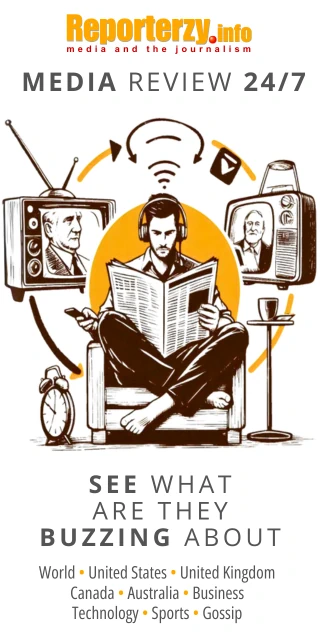 illustration: Bing AI
illustration: Bing AIModern marital relationships have undergone a remarkable transformation in the age of social media. Three researchers, Oqab Jabali, Bilal Hamamra, and Fayez Mahamid from An-Najah National University in Nablus, Palestine, explored the impact of social media on communication in relationships. Their findings were published in the journal Nature, Humanities and Social Sciences Communications.
“Modern relationships and social media: exploring the digital dynamics of husband–wife interactions” highlights how digital platforms have become an integral part of daily life, influencing communication methods and interactions. The study, conducted among 388 Palestinian couples from the West Bank, sheds new light on the issue.
Over 60% of respondents live in rural areas, significantly shaping their perception of social media. Couples from these regions exhibit a more optimistic view of technology’s impact on their relationships. Additionally, 40.2% of participants use social media for 2 to 4 hours daily, placing them in the moderate user category.
Social Media Builds Bridges of Understanding
One of the most significant aspects of the study is the analysis of social media’s impact on communication in relationships. The findings show that:
- 2.72 out of 5 points for improving communication between spouses through social media.
- 3.16 points for the ability to maintain contact during physical separation.
Despite its moderate impact on communication, platforms like Facebook and Instagram often help build bridges between partners, particularly in young relationships. In practice, this means more frequent interactions and easier access to emotional support, addressing the needs of modern couples.
Challenges of Technological Intimacy
However, not everything looks rosy. The report reveals that social media often becomes a source of tension:
- 3.73 points for perceived exposure to temptations and relationship threats.
- 3.34 points for increased jealousy and feelings of insecurity.
Examples include situations where partners monitor each other’s online activities, leading to misunderstandings and tension. In such cases, a lack of open communication can escalate conflict.
Impact of Demographic Factors
An intriguing finding of the study is the difference in social media perceptions based on gender, location, and education level:
- Women are more likely to view social media as a positive element in relationships.
- Couples from rural areas have a more optimistic outlook compared to city residents.
The table below shows variations in social media usage depending on the length of the marriage:
| Years of Marriage | 2–4 Hours Daily | 4–6 Hours Daily | More than 7 Hours |
|---|---|---|---|
| Less than 5 years | 56 | 36 | 12 |
| 6–10 years | 24 | 32 | 12 |
| 11–15 years | 28 | 16 | 0 |
| More than 15 years | 48 | 28 | 12 |
These data indicate that younger marriages more frequently engage with social media, likely due to greater technological proficiency.
According to social exchange theory (SET), relationships are based on a balance between benefits and costs. In the context of social media, benefits such as greater connectivity and emotional support are weighed against costs like jealousy and privacy disruption. Achieving balance requires conscious management of digital habits and open communication between partners.
* * *
The study “Modern relationships and social media: exploring the digital dynamics of husband–wife interactions” was conducted in April 2023. The authors analyzed data from 388 couples from the West Bank. Respondents represented various demographic groups, including urban and rural residents, couples with varying marital durations, and different education levels. The study methodology relied on a 23-question survey addressing social media use and its impact on aspects of relationships like communication, trust, intimacy, and conflict resolution. The rating scale was based on a five-point Likert scale.
The full study is available at:
https://www.nature.com/articles/s41599-024-04289-3
COMMERCIAL BREAK
New articles in section Media industry
Why do we believe fakes? Science reveals the psychology of virals
KFi
Why do emotions grab more attention than evidence, and why can a fake authority overshadow scientific data? Researchers from Warsaw University of Technology, Jagiellonian University, and SWPS University in Poland sought the answers. Here are their findings.
Investigative journalism in Europe. Newsrooms face pressure
KFi, Newseria
Media and political representatives point to the difficult situation of investigative journalism in Europe. Newsrooms are reluctant to invest in this segment due to high costs and the large amount of time and effort required. Most of all, however, they fear legal proceedings.
Energy under attack. Disinformation threatens Poland’s power transition
KFi
One in five online messages about energy may be fake. Between 2022 and 2025 nearly 70,000 publications warning and condemning disinformation in this strategic sector were recorded in Polish media. They generated a reach of 1.19 billion impressions.
See articles on a similar topic:
Influencers and social video rule information. Digital News Report 2025
Krzysztof Fiedorek
Seconds of vertical clips set the future of news. TikTok, YouTube and an army of influencers pull viewers away from TV sets and newspaper pages. Whoever masters this new pulse seizes not only attention but also control of the story.
Business Communication and 25 Years of PR Evolution. ITBC Report
KFi
How has technology transformed the way companies communicate with clients? What connects speed of response, creativity, and crisis resilience? The ITBC Communication report reveals how communication has evolved over the past 25 years and what defines the future of business relationships.
Gen Z Will Force Brands to Tell the Truth. GWI Report and Forecasts
Krzysztof Fiedorek
They value authenticity and brand transparency, preferring socially engaged companies. Young people see technology as a tool for growth, not just entertainment. In relationships, they prioritize genuine connections despite being highly active online. What do we know about Gen Z, and what does this mean for marketing? And beyond.
The Future of Journalism and Media. Predictions by Reuters Institute
KFi
74% of publishers fear a decline in search traffic. Paid subscribers are no longer growing as they used to, and relationships with tech giants are becoming increasingly complex. The report "Journalism, Media, and Technology Trends and Predictions 2025" forecasts what lies ahead for the media world in 2025.






























